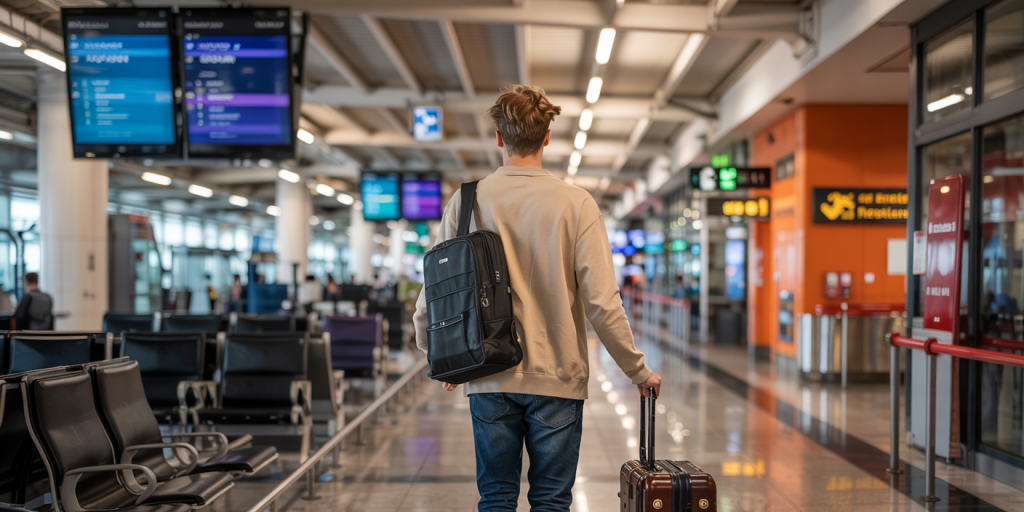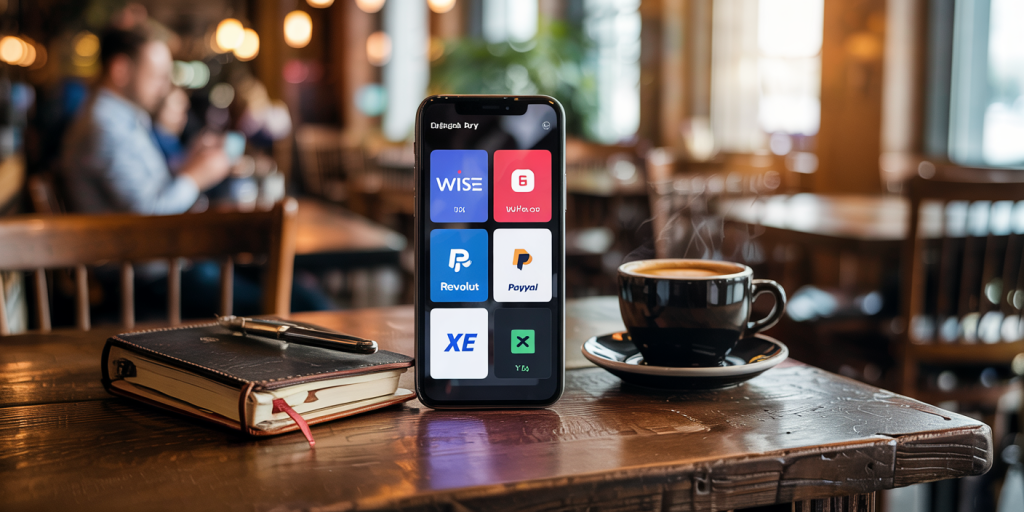Financial Planning for Digital Nomads: Budgeting While Traveling
Anúncios
The digital nomad lifestyle—working remotely while traveling the world—has become increasingly popular in recent years. With greater internet accessibility, a wide range of remote work opportunities, and a desire for freedom, more people are embracing a life on the move. However, behind the picturesque Instagram posts and exotic destinations, there lies a crucial component of success for any digital nomad: financial planning.
Without solid budgeting and financial strategies, the dream can quickly turn into a nightmare. In this comprehensive guide, we’ll explore essential budgeting techniques and financial planning strategies tailored specifically for digital nomads.
Understanding the Digital Nomad Lifestyle

Anúncios
Before diving into budgeting, it’s important to define what it means to be a digital nomad. These individuals are typically freelancers, remote employees, entrepreneurs, or online business owners who choose to travel regularly instead of settling in one location. This lifestyle provides freedom but also introduces complexities related to fluctuating living costs, inconsistent income, and currency variations.
The Unique Financial Challenges Faced by Digital Nomads
Financial planning for digital nomads requires adapting to challenges that most people with a fixed residence don’t encounter. These include:
Anúncios
-
Variable Income: Freelancers and contractors may face inconsistent monthly earnings.
-
Changing Living Costs: Accommodation, food, and transportation costs vary drastically between countries.
-
Currency Exchange: Fluctuating exchange rates can impact purchasing power.
-
Banking and Taxes: Managing international finances and taxes adds complexity.
-
Travel Risks: Unexpected events such as medical emergencies or trip cancellations can strain finances.
Step 1: Establish a Baseline Budget
The foundation of financial stability is a well-thought-out baseline budget. This should include your minimum monthly expenses that ensure comfort, safety, and work efficiency.
Categories to Include:
-
Accommodation – Monthly rent, Airbnb, or hostel fees.
-
Food – Groceries, dining out, delivery, and snacks.
-
Transportation – Flights, local transit, rideshare apps, vehicle rental.
-
Workspace Costs – Coworking spaces, coffee shops, or office supplies.
-
Health Insurance – International health plans and travel insurance.
-
Phone & Internet – Mobile plans, SIM cards, Wi-Fi devices.
-
Subscriptions – Software (like Adobe, Canva), streaming, VPNs.
-
Emergency Fund – Unexpected expenses like theft, repairs, or medical issues.
Use a budgeting app like YNAB, Revolut, or Trail Wallet to track expenses in real-time and adjust monthly projections accordingly.
Step 2: Create Multiple Income Streams
To balance the instability of remote income, digital nomads should aim for diverse income sources. Relying on a single client or platform is risky, especially when traveling.
Consider:
-
Freelancing: Platforms like Upwork, Fiverr, and Toptal.
-
Remote Jobs: Full-time or part-time positions from global companies.
-
Online Businesses: Dropshipping, blogging, affiliate marketing, and digital products.
-
Passive Income: Investments, rental income, or online courses.
Multiple streams provide a financial cushion, especially during slow periods or when transitioning between countries.
Step 3: Choose Cost-Effective Destinations
Not all destinations are equal when it comes to living costs. Digital nomads often choose countries where their currency stretches further without sacrificing quality of life.
Affordable Nomad-Friendly Countries:
-
Thailand – Great food, coworking spaces, and low rent.
-
Portugal – EU access, digital nomad visa, and good internet.
-
Colombia – Warm climate, low cost, and friendly community.
-
Vietnam – Cheap meals, modern cafes, and welcoming culture.
Research living costs using tools like Numbeo or Nomad List before selecting your next destination. Planning for cheaper regions can help you save money and extend your travel period.
Step 4: Build and Maintain an Emergency Fund
An emergency fund is non-negotiable. While the amount depends on your lifestyle, aim for at least three to six months of essential expenses saved in an easily accessible account.
This fund can cover:
-
Last-minute flights home
-
Medical emergencies
-
Lost or stolen equipment
-
Business slowdowns
Keep this fund in a separate account—ideally one that earns interest—and only use it for genuine emergencies.
Step 5: Use Digital Banking and Financial Tools

Managing finances across borders is simpler with the right digital tools.
Essential Tools:
-
Wise (formerly TransferWise) – Low-fee international transfers and multi-currency accounts.
-
Revolut – Currency exchange, budgeting, and travel benefits.
-
PayPal & Stripe – Receive client payments globally.
-
XE or CurrencyFair – Real-time exchange rate monitoring.
Opt for multi-currency bank accounts and low-fee cards that allow ATM withdrawals and online purchases in various currencies. Also, consider using a VPN when accessing banking portals abroad for security.
Step 6: Plan for Taxes and Retirement
Just because you’re traveling doesn’t mean you’re exempt from taxes. Depending on your nationality and where you earn income, you may be subject to tax obligations.
Tax Considerations:
-
U.S. Citizens must file taxes regardless of where they live.
-
Residency Rules vary—spending 183 days in a country might trigger tax residency.
-
Digital Nomad Visas may come with tax benefits or requirements.
Consult a tax advisor who understands expat and digital nomad tax laws. Tools like Nomad Tax or Greenback Expat Tax Services are great for assistance.
Also, plan for retirement. Contribute to retirement accounts (like Roth IRAs or solo 401(k)s for U.S. citizens), or consider private investment options suitable for long-term savings.
Step 7: Get Travel and Health Insurance
One serious illness or accident can devastate your budget. Purchase travel health insurance that covers:
-
Emergency care and hospitalization
-
Evacuation and repatriation
-
Routine checkups (optional, but helpful)
Popular providers for digital nomads include:
-
SafetyWing
-
World Nomads
-
IMG Global
-
Allianz Travel
Compare plans and ensure they include coverage for the countries you’ll visit.
Step 8: Monitor Spending and Optimize Regularly
Tracking your expenses isn’t a one-time task. Review your spending every week or month and look for areas to optimize. Ask yourself:
-
Did I overspend in one category?
-
Can I cut back on luxury purchases?
-
Is there a cheaper destination I can travel to next?
Use insights from your budgeting app to adjust and make smarter financial decisions. Over time, you’ll develop habits that support long-term sustainability.
Step 9: Use Credit Wisely
Credit cards can be a great tool when used responsibly. Choose travel-friendly credit cards that offer:
-
No foreign transaction fees
-
Travel rewards or cash back
-
Emergency card replacement
Be cautious of high-interest debt and always pay off your balance monthly. Credit can also help cover larger purchases during emergencies, but it shouldn’t replace your emergency fund.
Step 10: Prioritize Financial Goals
Just like anyone else, digital nomads should set financial goals. Whether it’s saving for a big trip, investing, or buying property one day, clarity helps guide your daily decisions.
Sample Goals:
-
Save $10,000 for a future home base
-
Build a $5,000 emergency fund
-
Invest 15% of monthly income in index funds
-
Fund a 3-month sabbatical
Set SMART goals (Specific, Measurable, Achievable, Relevant, Time-bound), and review them quarterly.
Final Thoughts

Living as a digital nomad can be incredibly rewarding, offering freedom, new experiences, and personal growth. But without careful financial planning, the dream can quickly fall apart. By budgeting wisely, diversifying income, and using the right tools, digital nomads can enjoy a financially secure and sustainable lifestyle while exploring the world.
Smart budgeting isn’t about limiting your freedom—it’s about protecting it. Stay disciplined, plan ahead, and the world truly can become your office.
Post Comment